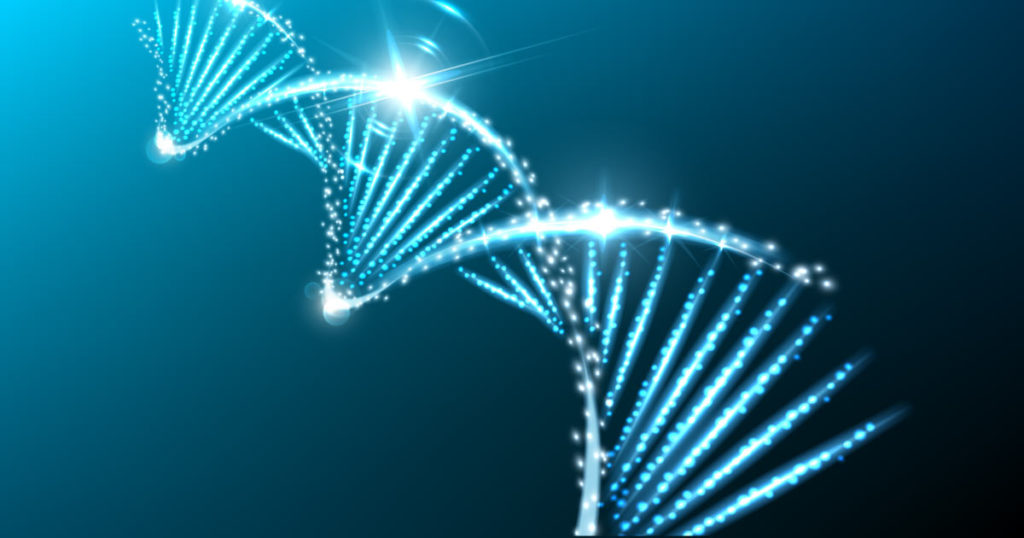Many of the traits characteristic to human pregnancy are unique. In contrast to other mammals, human pregnancy and labor last longer, and humans are more prone to complications, including infertility, preeclampsia and preterm birth. Research recently published in eLife Sciences by Vincent Lynch, PhD, and colleagues explores the history of gene expression in the human uterus, how it differs from other mammals and how changes in expression may be implicated in our susceptibility to disease.
This study is part of the emerging field of evolutionary medicine, where researchers apply modern evolutionary theory to help us understand the mechanisms behind human health and disease. By studying the history of gene expression, researchers and physicians can illuminate the pathways through which evolution has guided the development of modern tissues and organ systems, and how these systems may differ in one species versus the next.

In the study, Lynch et al. focused on the evolutionary history of the endometrium, the lining of the uterus. They compared the transcriptomes, or sequences of ribonucleic acid (RNA), from the endometrial tissue of 32 species, including humans, monkeys, marsupials, birds and reptiles. By comparing the transcriptomes, researchers successfully identified hundreds of genes gained or lost in the human lineage during its evolution.
Among those gained were genes that appear to distinctly differentiate human pregnancy from pregnancy in other mammals. These genes are known to play a role in immune system regulation, maternal-fetal communication and placental development. Researchers were especially keen to explore three of these genes: one that may point to a previously unknown communication pathway between mother and fetus, another that supports the maternal immune system, and a third that promotes the development of blood vessels and deep placental invasion, or the degree to which the placenta is buried in the uterine wall.
Maternal-Fetal Communication During Pregnancy
One result of this study points to the importance of serotonin signaling in the endometrium throughout pregnancy. Researchers focused on one gene in particular, the serotonin receptor HTR2B. They found that this receptor is expressed through endometrial tissues in humans and mice, though not in other mammals, and may represent an important signaling pathway for communication between mother and fetus. Previous studies have shown that serotonin is present in human amniotic fluid, especially near term and during labor, and that serotonin may play a role in childbirth. This evidence further supports the authors’ suggestion that the adoption of HTR2B into the human endometrial transcriptome established an important and uniquely human communication pathway between mother and fetus that may be instrumental throughout the stages of pregnancy. To investigate the role of serotonin in the endometrium, scientists used the Dual-Luciferase® Reporter Assay from Promega, which helped to elucidate the effects of serotonin treatment on endometrial cells.
Immune System and Vascular Development
Another gene highlighted in this study codes for the programmed cell death protein 1 (PD-1) ligand known as PDCD1LG2 (PD-L2). PD-1 plays an important role in downregulating immune response and promoting maternal immune tolerance of the fetus by inhibiting inflammatory activity. PD-L2 is expressed in several different maternal cell types during the first trimester and is highly expressed in uterine tissues. Researchers found that while PD-L2 is expressed in humans, it was either not expressed or only moderately expressed in the endometria of the other examined species.
The third gene discussed in this study is CORIN. This gene is thought to play a role in the extensive vascular remodeling and deep placental invasion characteristic to the early stages of pregnancy in humans and other great apes. Preeclampsia is associated with a deficiency in spiral artery remodeling, a process which results in improved blood flow to the placenta. The expression of CORIN is markedly lower in patients with preeclampsia, leading researchers to believe that the evolutionary acquisition of CORIN into the human endometrium may have made humans especially susceptible to preeclampsia.
Tying It All Together
Results from this study demonstrate that changes to gene expression in the endometrium likely account for uniquely human pregnancy traits, including adverse outcomes. This study illustrates how evolutionary medicine can inform our understanding of human health and disease by examining the history of how and when genes gained or lost expression and the impact they may have. This speaks to the promise of evolutionary transcriptomics research in helping us study and better treat human disease and organ dysfunction.
Improve your reporter assay data! Here are some tips for improving dual reporter assays, and make sure you get the most out of your reporter assays with a GloMax® Discover Microplate Reader.
Latest posts by AnnaKay Kruger (see all)
- Elephants May Call Each Other By Name - July 16, 2024
- Studying Episodic Memory through Food-Caching Behavior in Birds - April 16, 2024
- A Silent Killer: Tracking the Spread of Xylella fastidiosa - March 27, 2024
